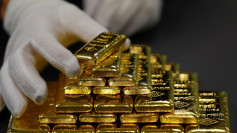The Federal Reserve is expected to keep interest rates unchanged on Wednesday, holding firm in the face of escalating pressure from President Donald Trump, who has called for drastic cuts despite inflation risks. The decision comes just days after Trump made a rare visit to the Fed's Washington headquarters, demanding rates be slashed from the current 4.25%-4.5% range to as low as 1%.
It will mark the seventh straight month that the central bank has maintained its benchmark rate, despite what Fed officials have called a "data-dependent" outlook and rising concerns over inflation tied to Trump's tariff policies. Investors place a 97% probability on the Fed leaving rates steady, according to CME's FedWatch Tool.
Trump has repeatedly blamed Fed Chair Jerome Powell for hindering economic growth. "We have a man who just refuses to lower the Fed rate," Trump said last month. "Maybe I should go to the Fed. Am I allowed to appoint myself? I'd do a much better job than these people."
Though the president is legally prohibited from appointing himself to the central bank, Trump has escalated his criticism, most recently slamming the Fed's $2.5 billion headquarters renovation, which the Fed says will "reduce costs over time by allowing the Board to consolidate most of its operations."
Trump's call for rapid rate reductions has failed to sway most Federal Open Market Committee members. Even those favoring a cut - including Trump appointees Governor Christopher Waller and Vice Chair Michelle Bowman - are pushing for a more conventional quarter-point reduction, not the multi-point drop the White House seeks. Both officials are expected to dissent if rates are held steady, which Deutsche Bank economists say would be the first dual dissent by governors since 1993.
The Fed's most recent economic projections, released in June, included two anticipated rate cuts by year-end. But officials remain cautious, awaiting more data before committing to a September move. "I wouldn't take any meeting off the table or put any on the table," Powell said earlier this month at the European Central Bank's forum in Portugal. "It depends on how the data evolve."
Analysts warn that aggressive rate cuts could fuel inflation in an economy where prices are already pressured by tariffs, particularly on imported goods. June's Consumer Price Index showed increases in housing and food, with tariffs playing a smaller but growing role.
With the unemployment rate still low and inflation running above the Fed's 2% target, the policy-setting committee is unlikely to shift course before September's meeting, according to Deutsche Bank's Matthew Luzzetti. "We expect the Fed to hold rates steady for the fifth straight meeting and largely maintain existing signals about the policy outlook," he wrote.






